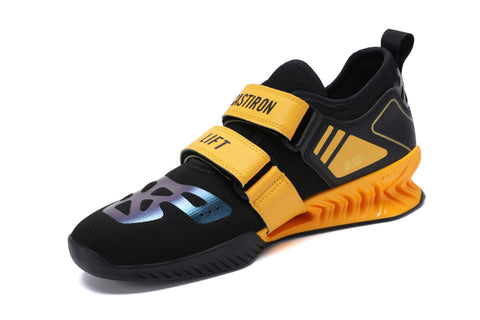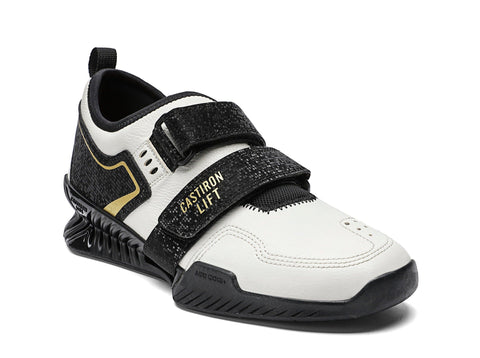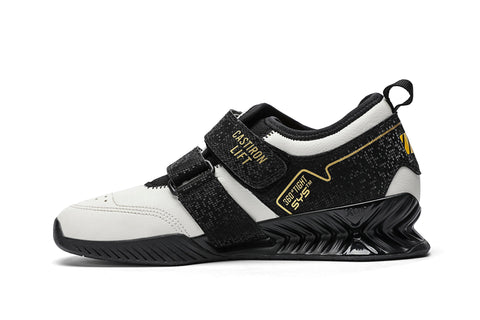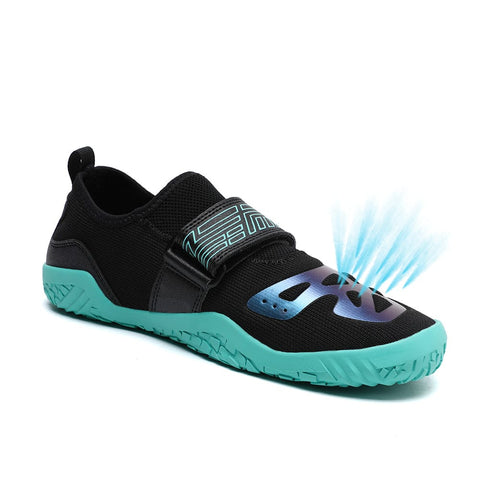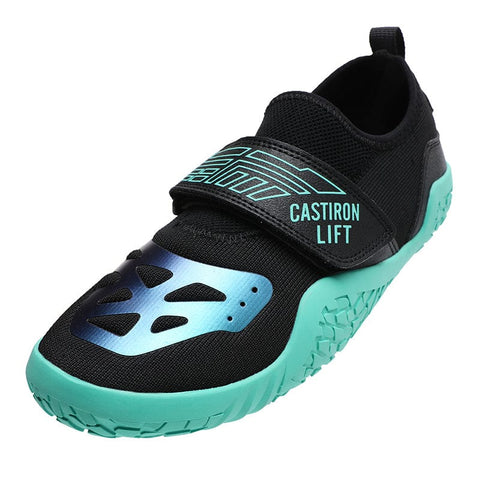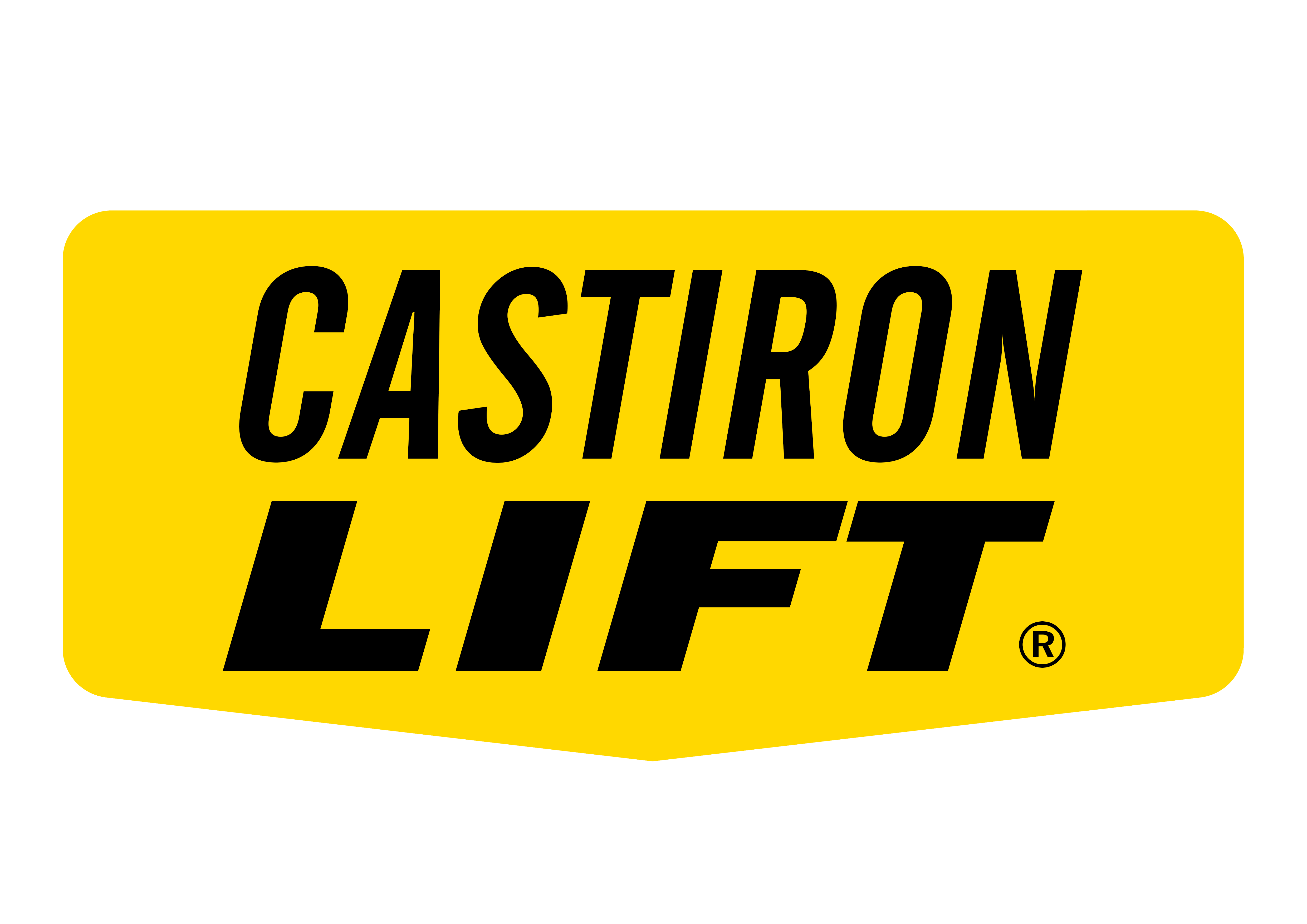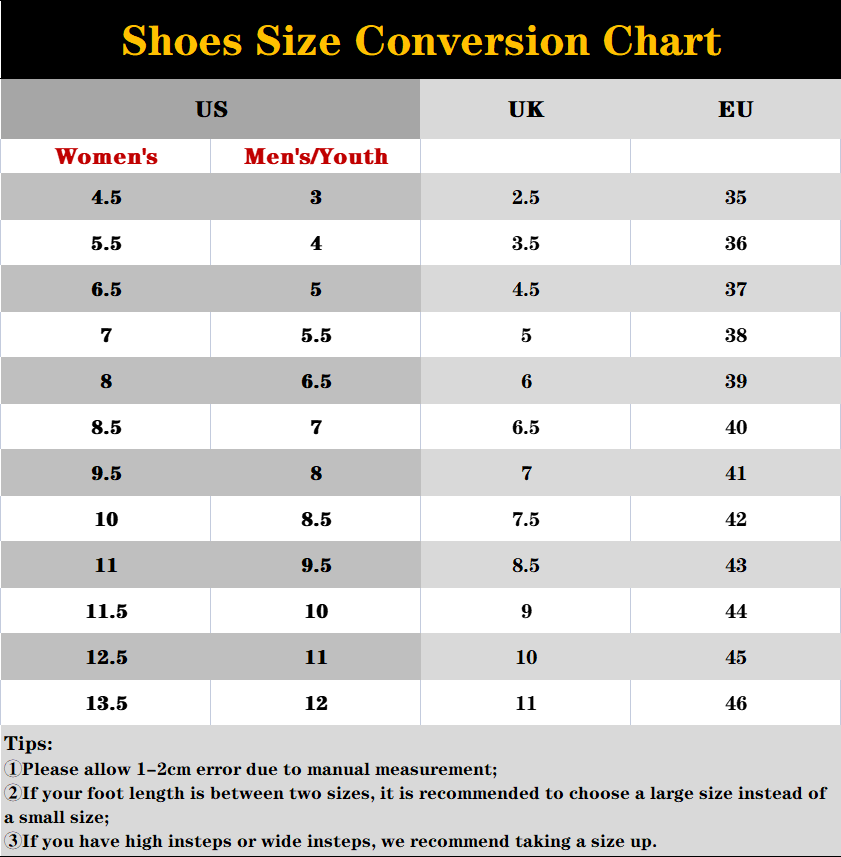Best Weightlifting Shoes 2025: I Tested 75 Pairs So You Don't Have To

Finding the best weightlifting shoes can dramatically change your lifting performance, which is why I personally tested 75 different pairs over six months.
After countless squats, cleans, and jerks, I've identified clear winners for every type of lifter. Whether you're looking for custom weightlifting shoes for sale in the USA or wondering about CastIron Lift apparel durability, this comprehensive guide has you covered. From the all-around excellence of Nike Savaleos to the wide-foot-friendly TYR L-1 Lifters, I've analyzed each shoe based on heel height, stability, comfort, and value. Beyond just recommendations, I'll explain exactly why certain shoes excel for specific lifting styles and body types. When you choose the right weightlifting shoe, your PR numbers won't be the only thing improving—your form and confidence will too.
Top Picks: Best Weightlifting Shoes of 2025 by Category
After countless hours in the gym putting these shoes through extreme tests, I've identified clear winners for every lifting scenario. Let's dive into the top weightlifting shoes of 2025, categorized by specific training needs.
Best Overall: Nike Savaleos
The Nike Savaleos strikes the perfect balance between performance and value at $125. With a moderate 15mm heel height, it provides enough elevation for proper positioning without feeling extreme for beginners 1. The wide toe box and rigid midsole offer exceptional stability during heavy lifts while maintaining comfort for longer sessions.
What makes the Savaleos stand out is its versatility. Unlike shoes designed exclusively for Olympic lifting, these function well across multiple training styles. The flat, wide sole creates a solid base under pressure, and the rigid midsole construction delivers excellent power transfer from the ground 2. Nike recommends sizing up half a size for an optimal fit.
Best for CrossFit: Nike Metcon 9
For CrossFit athletes needing versatility without sacrificing stability, the Nike Metcon 9 delivers at $150. The larger Hyperlift plate in the heel provides exceptional stability for squats and deadlifts while the extended rubber wrap on the sides offers superior durability for rope climbs 3.
The Metcon 9 features a wider toe box compared to previous models and a more stable heel, making it particularly effective for quick transitions between exercises 3. However, these aren't ideal for extended running portions of WODs due to their relatively stiff platform.
Best for Beginners: Adidas Powerlift 5
Beginners need a shoe that balances stability with value, and the Adidas Powerlift 5 fits the bill perfectly at $130. With a 16mm effective heel height, this shoe offers enough elevation to improve positioning without feeling dramatically different from regular training shoes 4.
The high-density EVA foam midsole provides impressive stability for most lifters while being more forgiving than the TPU heels found in more expensive models 4. This makes the Powerlift 5 an excellent first weightlifting shoe for anyone just getting into proper lifting footwear.
Best for Olympic Lifting: Nike Romaleos 4
Serious Olympic lifters need maximum stability and heel height, which the Nike Romaleos 4 delivers with its 20mm heel-to-toe drop 5. At $200, these premium shoes feature dual leather straps that lock down the midfoot and a unique patterned rubber sole for superior platform feel 5.
The rigid TPU heel and midsole create an incredibly stable platform that many users describe as making them feel "rooted to the ground" 2. Although they're the heaviest shoes on this list, that weight contributes to their unmatched stability during the most challenging Olympic lifts.
Best for Wide Feet: TYR L-1 Lifters
Athletes with wider feet often struggle to find comfortable lifting shoes, but the TYR L-1 Lifters solve this problem with their patent-pending anatomical toe box 6. The 21mm heel-to-toe drop is among the highest available, allowing for a more upright torso position and improved squat depth 7.
The adjustable double straps at the midfoot secure foot position while the flat, wide sole provides exceptional stability 8. At $150, these shoes represent excellent value for lifters who've previously felt cramped in standard weightlifting shoes.
Best Budget Option: kcross Weightlifting Shoes
At just $70, the kcross Weightlifting Shoes prove you don't need to spend a fortune on quality lifting footwear 9. Surprisingly similar to the Nike Romaleos in design and stability, these budget options feature a comparable heel design to shoes nearly three times their price.
The kcross shoes provide excellent stability for Olympic weightlifting and squats, making them ideal for athletes with limited ankle mobility 9. The only significant drawbacks are the limited size range and narrower toe box compared to more premium options.
Nike Savaleos: Best Overall for Most Lifters
The Nike Savaleos has quickly established itself as the perfect entry point into the world of specialized lifting footwear. After testing dozens of weightlifting shoes across various price points, the Savaleos consistently impressed me with its balance of affordability, stability, and versatility.
Heel Drop: 15mm for moderate elevation
The 15mm (approximately 0.59 inches) heel elevation in the Savaleos hits a sweet spot that many other lifting shoes miss 10. This moderate height provides enough lift to improve squat mechanics without feeling dramatically different from regular training shoes.
Furthermore, this heel height is notably lower than the 19-20mm found in the more expensive Romaleos line 11, making it less extreme for those transitioning from flat shoes. Throughout my testing, this moderate elevation proved ideal for maintaining proper positioning during squats while still allowing enough ground feel for deadlifts and other movements.
The heel design creates an ergonomic position for your ankles, knees, and hips, enabling deeper squats with a more upright torso 12. This anatomical advantage translates directly to more efficient lifting and reduced injury risk.
Stability and Fit: Wide toe box and rigid midsole
Stability is where the Savaleos truly shines. The flat, wide sole creates an impressively solid base under heavy loads 13. According to measurements, the forefoot width reaches 116mm at its widest point—significantly broader than average lifting shoes 12.
Additionally, the rigid midsole construction delivers excellent power transfer from the ground 13. This design element becomes especially crucial when performing explosive movements like cleans or jerks.
The midfoot features a single hook-and-loop strap that effectively locks down your foot 14. Though some premium models offer dual straps, this single strap combined with traditional lacing provides sufficient security for most lifting scenarios. The padded tongue and collar add comfort without compromising performance.
One consideration: those with particularly wide feet might find the toe box somewhat restrictive, as measurements show a below-average width of 89.4mm at its widest point 12.
Who It's For: Casual lifters and beginners
The Savaleos excels as an introduction to weightlifting shoes. Their design specifically caters to:
- Beginning lifters transitioning to elevated heels 15
- Casual gym-goers who perform various lifting styles 16
- Athletes who want versatility beyond just lifting 13
I've successfully tested these shoes with weights up to 385 pounds for squats and 245 pounds for clean and jerks 15. This demonstrates their capability to handle serious loads despite their entry-level classification.
The shoes are also remarkably lightweight at just 14.8 oz (420g), which is significantly lighter than the Romaleos 4 at 20.1 oz (571g) 12. This lighter construction makes them more appropriate for workouts that include movements beyond strict lifting.
Price-to-Performance Ratio
Priced at $125, the Savaleos sits comfortably in the mid-range market 17. This represents substantial savings compared to premium models like the Romaleos line that typically cost around $200 10.
Despite the lower price point, you're still getting impressive performance features:
- TPU midsole stability comparable to higher-end models
- Durable construction for long-term use
- Versatility across different lifting styles
Essentially, the Savaleos bridges the gap between everyday training shoes and specialized weightlifting footwear. For lifters not yet ready to invest $160-$200 in dedicated lifting shoes, or those who only lift occasionally without chasing personal records, the Savaleos offers exceptional value 12.
The cost-to-performance equation makes them particularly appealing for those just beginning their weightlifting journey or casual lifters looking to improve their form without breaking the bank.
Nike Metcon 9: Best for CrossFit and Versatile Training
At the crossroads of versatility and performance, the Nike Metcon 9 stands out as the premier CrossFit shoe in my extensive testing. Priced at $150, these trainers excel in environments demanding quick transitions between lifting and dynamic movements—a critical factor for serious CrossFit athletes.
Durability and Rope Guard Features
The most striking visual element of the Metcon 9 is its dramatically enhanced rope protection. Nike significantly expanded the rubber guard, extending it all the way to the collar on the inside of the shoe and mid-way on the outside 18. This substantial upgrade provides exceptional durability during rope climbs that would typically shred lesser shoes.
For the purpose of testing durability objectively, I examined how the Metcon 9 handled abrasion. When subjected to a highly abrasive Dremel tool for 12 seconds at 5K RPM with 3.2N of pressure, the rubberized dots on the toebox effectively protected the underlying mesh, earning it a score of 3 out of 5—higher than the average training shoe's score of 2.5 19.
Additional protective elements include:
- Rubber texture on the toebox for improved grip during climbs 18
- Curved middle portion of the sole for more ergonomic rope wrapping 19
- Breathable yet durable mesh that withstands scrapes and quick-drag movements 20
Flat Heel for Stability in Lifts
The Metcon 9 features a redesigned Hyperlift plate in the heel that provides exceptional stability. This larger, non-compressible TPU plastic element helps force weight down and outward while adding rigidity specifically beneficial for lower-body exercises like split squats and deadlifts 20.
In terms of torsional rigidity, the Metcon 9 scored a perfect 5 out of 5 (where 5 is the stiffest), significantly outperforming the average training shoe score of 2.7 19. Similarly, the heel counter stiffness rated an impressive 4 out of 5, substantially higher than the category average of 2.7 19.
Why It Works for CrossFit WODs
The dual-density midsole—firm foam on the outside, soft foam on the inside—provides responsive cushioning that remains comfortable throughout high-intensity workouts 20. This construction excels in box jumps, sledge pushes, and burpees, yet maintains sufficient control when transitioning to lifting movements 18.
Moreover, the wider toe box compared to previous Metcon models allows better toe splay, enabling more even weight distribution throughout your foot 18. This enhancement, coupled with the secure lace lock system attached to the tongue, ensures your foot stays properly positioned regardless of movement direction 20.
Limitations for Long-Distance Running
Evidently, the Metcon 9's greatest weakness emerges during extended running sessions. At 13.3 oz (378g), it's not only 1.5 oz heavier than its predecessor but nearly 2 oz heavier than the average cross-trainer 19. This substantial weight, combined with the rigid Hyperlift heel, makes the shoe unsuitable for high-impact aerobic workouts.
While adequate for 400-800 meter runs within a WOD 21, anything beyond that becomes increasingly uncomfortable 18. The consensus among testers, myself included, is that these shoes should be swapped for dedicated running shoes when workouts include distances beyond 800 meters.
All things considered, the Nike Metcon 9 represents an excellent choice for CrossFit athletes who prioritize lifting performance while requiring enough versatility for mixed-modal training—just don't expect them to double as your daily runners.
Adidas Powerlift 5: Best Entry-Level Lifting Shoe
For beginners entering the world of specialized lifting footwear, the Adidas Powerlift 5 strikes an ideal balance between performance features and budget-friendly pricing. Priced between $110-130, these shoes serve as an excellent gateway into proper weightlifting footwear without the premium cost of higher-end models.
Heel Height and EVA Midsole
The Powerlift 5 features a 15-16mm heel height (approximately 0.6 inches), positioning it on the lower end of the spectrum for weightlifting shoes 22. This modest elevation makes it particularly suitable for lifters transitioning from flat shoes who might find steeper heels jarring initially. The heel consists of high-density EVA foam rather than the TPU found in premium models, providing a balance of stability and slight cushioning 23.
This EVA midsole creates a stable platform for most recreational lifters, yet it does compress more than TPU when subjected to extremely heavy loads. Consequently, lifters regularly squatting beyond 350-500 pounds may notice slightly reduced power transfer efficiency 1. Nevertheless, the midsole remains impressively rigid for everyday training purposes 24.
Comfort and Fit for New Lifters
The Powerlift 5 introduces a redesigned canvas upper with breathable mesh inserts that form-fits the foot effectively 25. A midfoot strap coupled with traditional lacing ensures foot security, enabling a customizable locked-down feeling 26.
Concerning sizing, these shoes typically run true to size for medium-width feet 27, though some users report a somewhat narrow toe box 26. Indeed, measurements confirm the Powerlift 5 has a below-average width of 89.2mm at its widest point 1. Athletes with wider feet might consider sizing up half a size for better comfort 24.
Breathability and Build Quality
The breathability represents a significant improvement over previous Powerlift generations, primarily due to the mesh inserts, perforated tongue, and large eyelets 3. Yet, these enhancements only bring the breathability to modest levels, scoring 2 out of 5 in ventilation tests 1.
Durability tests reveal the canvas upper faces some vulnerability to abrasion, scoring a 2 out of 5 when subjected to drilling tests 1. Subsequently, this explains part of the price difference compared to $200+ premium models with more robust materials 1.
How It Compares to Higher-End Models
The main differences between the Powerlift 5 and premium weightlifting shoes include:
- Heel material: EVA foam versus TPU (which is 47% firmer) 1
- Heel height: 15-16mm versus 20-22mm in premium models 3
- Construction quality: Good but not premium materials 22
These differences make the Powerlift 5 more versatile for general fitness while sacrificing some performance benefits for dedicated Olympic lifting 3. The lower heel actually creates advantages for powerlifting-style movements, making them suitable for those who squat with a low-bar position 3.
For recreational lifters who incorporate various training styles beyond pure weightlifting, these limitations often become benefits, creating a more accessible shoe for general gym use 22.
TYR L-1 Lifters: Best for Wide Feet and High Heels
Wide-footed lifters often struggle to find comfortable weightlifting shoes, which is precisely where the TYR L-1 Lifters shine with their revolutionary design. Developed alongside specialists in foot biomechanics, these shoes address a common frustration for many strength athletes.
Anatomical Toe Box Design
The standout feature of the TYR L-1 Lifters is their patent-pending anatomical toe box 28. Unlike typical weightlifting shoes that constrain the forefoot, these shoes allow for natural toe splay and foot movement 28. In fact, the toe box width rivals some barefoot shoe designs 4. This wider construction permits more even weight distribution through a natural foot placement, markedly enhancing stability when performing heavy lifts 29.
The anatomical design isn't merely about comfort—it fundamentally changes how force transfers through your foot. By allowing toes to spread naturally, the L-1 Lifters create a more stable base that's particularly beneficial for wide-footed lifters who typically feel cramped in standard weightlifting footwear 4.
21mm Heel Drop for Deep Squats
Among weightlifting shoes currently available, the TYR L-1 Lifters feature one of the highest heel elevations on the market at 21mm (.83 inches) 284. This substantial heel-to-toe drop serves two primary purposes: it allows for a more upright torso position during lifts and significantly improves squat depth 28.
For lifters with limited ankle mobility or longer femurs, this elevated heel becomes particularly valuable, enabling proper positioning without compromising form 29. The flat, wide sole beneath this heel provides exceptional stability, creating a solid foundation even when handling substantial loads 4.
Durability and Material Quality
The L-1 Lifters feature a heavier leather upper that feels substantial and well-constructed 4. This thicker material requires some break-in time but offers excellent durability for long-term use. The TPU heel demonstrates impressive rigidity, refusing to compress even under loads exceeding 400 pounds 4.
Additional durability features include an extended outsole wrap over the toe box, providing protection against premature wear 4. The rubber outsole grips effectively on both wooden platforms and rubber gym floors, practically eliminating concerns about slipping during dynamic movements 4.
Fit Considerations for Narrow Feet
Despite their advantages for wide-footed lifters, these shoes may present challenges for those with narrow feet. The spacious toe box can cause narrow-footed athletes to feel they're "swimming" in the shoe, potentially sliding into the sides during dynamic movements like snatches or clean and jerks 4.
If you have a narrow foot, alternative options like Adidas Adipowers, Nike Romaleos, or Reebok Legacy Lifters might provide a more secure fit 29. Regarding sizing, most users with neutral to wide feet should order their typical size, though some report the shoes run small by half to a full size 28.
Conclusion
Finding the right weightlifting shoes ultimately comes down to your specific lifting style, foot shape, and budget. After testing 75 different pairs through countless gym sessions, one fact stands clear - proper footwear dramatically improves both lifting performance and safety.
The Nike Savaleos remains the best overall option for most lifters due to its balanced 15mm heel height, impressive stability, and reasonable $125 price point. Competitive CrossFit athletes should certainly consider the Nike Metcon 9 with its versatile design and enhanced rope guard protection. Beginners benefit most from the Adidas Powerlift 5, which offers essential stability features without overwhelming those new to elevated heels.
Serious Olympic lifters need look no further than the Nike Romaleos 4, though the premium $200 price reflects its specialized capabilities. Wide-footed lifters finally have a solution in the TYR L-1 Lifters with their revolutionary anatomical toe box. Budget-conscious athletes can still achieve excellent results with the surprisingly capable kcross Weightlifting Shoes at just $70.
Heel height emerged as perhaps the most critical factor during testing. Lower 15-16mm heels work better for beginners and versatile training, while taller 20-22mm heels benefit Olympic lifters and those with limited ankle mobility. Additionally, construction material significantly impacts performance - TPU heels provide maximum stability for heavy lifts, while EVA offers more versatility at lower weights.
Your ideal weightlifting shoe depends on honest assessment of your needs. Recreational lifters might prefer the versatility of the Savaleos, while competitive athletes should invest in shoes specifically designed for their discipline. Whatever your choice, the right weightlifting shoes will transform not just your numbers but also your confidence under the bar.
References
[1] - https://runrepeat.com/adidas-powerlift-5
[2] - https://www.roguefitness.com/nike-romaleos-4-mens-shoes?srsltid=AfmBOoqn-tor2H7zaXR93zMwlXLQduWCuaxvnGecB54Z49v-WowfpR0D
[3] - https://garagegymlab.com/adidas-powerlift-5-review/
[4] - https://thatfitfriend.com/tyr-l-1-lifter-review/
[5] - https://www.garagegymreviews.com/nike-romaleos-4-weightlifting-shoes-review
[6] - https://www.gq.com/story/tyr-l-1-lifter-review
[7] - https://www.tyr.com/tyr-men-s-l-1-lifter-extra-wide.html
[8] - https://www.tyr.com/tyr-women-s-l-1-lifter-extra-wide-1.html
[9] - https://www.garagegymreviews.com/kcross-weightlifting-shoes-review
[10] - https://barbend.com/nike-savaleos-weightlifting-shoe-review/
[11] - https://fitatmidlife.com/nike-savaleos-weightlifting-shoe-review/
[12] - https://runrepeat.com/nike-savaleos
[13] - https://www.roguefitness.com/nike-savaleos-mens-shoes?srsltid=AfmBOoo_g66VXsiD7FuAAxaeR8vtByKhl42MMPKIHeklPUC5LS1-ANZw
[14] - https://www.garagegymreviews.com/nike-savaleos-weightlifting-shoes-review
[15] - https://thatfitfriend.com/nike-savaleos-review/
[16] - https://www.garagegymreviews.com/best-weightlifting-shoes
[17] - https://www.athleteps.com/nike-savaleos-weightlifting-shoes/
[18] - https://www.t3.com/reviews/nike-metcon-9-review
[19] - https://runrepeat.com/nike-metcon-9
[20] - https://www.nike.com/t/metcon-9-mens-workout-shoes-Tc42zx
[21] - https://www.garagegymreviews.com/nike-metcon-9-review
[22] - https://garagegymrevisited.com/the-total-vs-powerlift-5/
[23] - https://garagegymlab.com/best-weightlifting-shoes/
[24] - https://www.garagegymreviews.com/adidas-powerlift-5-review
[25] - https://thatfitfriend.com/adidas-powerlift-5-review/
[26] - https://www.roguefitness.com/adidas-powerlift-5-weightlifting-shoes?srsltid=AfmBOor-81yk1B86qlWojy0JY1IWwXDmAUJ4aIFC6Ma7tkLIhmIHciYl
[27] - https://thatfitfriend.com/best-weightlifting-shoes/
[28] - https://www.tyr.com/tyr-mens-l1-lifter-1.html
[29] - https://garagegymlab.com/tyr-l-1-lifter-review/

